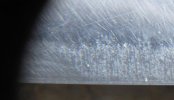- Joined
- Jun 13, 2007
- Messages
- 7,743
Is a jewlers loupe sufficient for inspecting the edge of a blade? Say 30x magnification.
I've got my Opinel to where I can drag a hair across it and sometimes it will "break" the hair, but I need to know what's going on with the edge to get it sharper.
If not a loupe what do you suggest?
They have led lit ones on the river for around 3-$5 I'd prefer to buy one locally. Any idea where I can look? Already tried Radio Shack.
Thanks for any advice!
I've got my Opinel to where I can drag a hair across it and sometimes it will "break" the hair, but I need to know what's going on with the edge to get it sharper.
If not a loupe what do you suggest?
They have led lit ones on the river for around 3-$5 I'd prefer to buy one locally. Any idea where I can look? Already tried Radio Shack.
Thanks for any advice!



